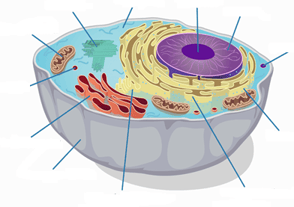Diversity of Cells
Diversity of Cells: Overview
This topic covers concepts such as Unicellular Organisms, Multicellular Organisms, Shape and Size of Cell, Plant Cell, Animal Cell, Types of Cell, Nerve Cells, and Muscle Cells.
Important Questions on Diversity of Cells
Nerve cells help in the movement of body as well as body parts by contracting and relaxing.
Muscle cells help to transmit messages to the brain.
Choose the muscle cell.
The function of a neuron is to transmit impulses to the _____ and also to take away messages from it to the receptor organs.
The function of a neuron is to transmit impulses.
Choose the nerve cell.
Choose the largest cell among the following.
WBC is an example of cell that do not have definite shape.
Name the structures responsible for the shape of the cell.
Name the labelled part in the diagram given below.

A single cell is found in unicellular organisms.
Which among the following is a unicellular organism?
Name some organisms whose body is made up of only single cell.
Which type of cell will have more mitochondria, a muscle cell or a bone cell?
Do you think that an individual cell is living? Explain your answer.
Draw a labelled diagram of the animal cell?
Name any two multicellular organisms.
Name any two unicellular organisms.
Which among the following is/are animal cell(s)?
Which organism is more efficient in its functioning and why—unicellular or multicellular?
